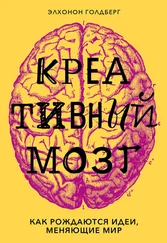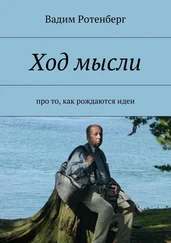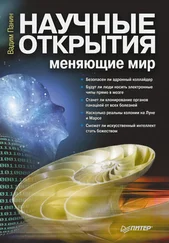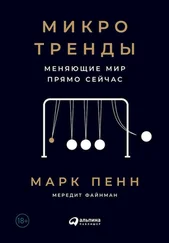3. K. C. Manton, X. L. Gu, and S. V. Ukraintseva, «Declining Prevalence of Dementia in the U. S. Elderly Population», Advances in Gerontology 16 (2005): 30–37.
4. K. M. Langa, E. B. Larson, J. H. Karlawish, D. M. Cutler, M. U. Kabeto, S. Y. Kim, and A. B. Rosen, «Trends in the Prevalence and Mortality of Cognitive Impairment in the United States: Is There Evidence of a Compression of Cognitive Morbidity?» Alzheimer’s and Dementia 4 (2008): 134–144; K. M. Langa, E. B. Larson, E. M. Crimmins, J. D. Faul, D. A. Levine, M. U. Kabeto, and D. R. Weir, «A Comparison of the Prevalence of Dementia in the United States in 2000 and 2012», JAMA Internal Medicine, 177 (2017): 51–58.
5. G. Doblhammer, A. Fink, S. Zylla, and F. Willekens, «Compression or Expansion of Dementia in Germany? An Observational Study of Short-term Trends in Incidence and Death Rates of Dementia Between 2006/ 07 and 2009/ 10 Based on German Health Insurance Data», Alzheimer’s Research and Therapy 7 (2015): 66.
6. K. M. Langa, «Is the Risk of Alzheimer’s Disease and Dementia Declining?» Alzheimer’s Research and Therapy 7 (2015): 34; C. Qiu, E. Von Strauss, L. Bäckman, L. B. Winblad, and L. Fratiglioni, «Twenty-Year Changes in Dementia Occurrence Suggest Decreasing Incidence in Central Stockholm, Sweden», Neurology 80 (2013): 1888–1994.
7. L. Fratiglioni and H. X. Wang, «Brain Reserve Hypothesis in Dementia», Journal of Alzheimer’s Disease 12 (2007): 11–22.
8. E. Goldberg, The Wisdom Paradox: How Your Mind Can Grow Stronger as Your Brain Grows Older (New York: Gotham Books, 2005).
9. N. Raz, F. Gunning-Dixon, D. Head, K. M. Rodrigue, A. Williamson, and J. D. Acker, «Aging, Sexual Dimorphism, and Hemispheric Asymmetry of the Cerebral Cortex: Replicability of Regional Differences in Volume», Neurobiology of Aging 25 (2004): 377–396; N. Raz, P. Ghisletta, K. M. Rodrigue, K. M. Kennedy, and U. Lindenberger, «Trajectories of Brain Aging in Middle-Aged and Older Adults: Regional and Individual Differences», NeuroImage 51 (2010): 501–511.
10. C. Van Doren, A History of Knowledge: Past, Present, and Future, reissue edn. (New York: Ballantine Books, 1992).
11. W. James, Is Life Worth Living? reprint edn. (North Charleston, SC: CreateSpace, 2015).
12. См. ссылку, где опубликован пост Марка Цукерберга о приобретении компании Oculus VR: www.facebook.com/ zuck/ posts/ 10101319050523971.
13. W. Knight, «Microsoft Researchers Are Working on Multi-Person Virtual Reality», MIT Technology Review (October 12, 2015): https:// www.technologyreview.com/s/ 542341/ microsoft-researchers-are-working-on-multi-person-virtual-realit/
14. Z. M. Aghajan, L. Acharya, J. J. Moore, J. D. Cushman, C. Vuong, and M. R. Mehta, «Impaired Spatial Selectivity and Intact Phase Precession in Two-Dimensional Virtual Reality», Nature Neuroscience 18 (2015): 121–128.
15. K. Sawyer, Group Genius: The Creative Power of Collaboration (New York: Basic Books, 2008); K. Sawyer, Explaining Creativity: The Science of Human Innovation, 2nd edn. (New York: Oxford University Press, 2012).
16. J. R. Hackman, Collaborative Intelligence: Using Teams to Solve Hard Problems (San Francisco, CA: Berrett-Koehler Publishers, 2011); D. Markova and A. McArthur, Collaborative Intelligence: Thinking with People Who Think Differently (New York: Spiegel & Grau, 2015); D. Contu, «Why Teams Don’t Work», Harvard Business Review 5 (2009).
17. S. Cole, «Age and Scientific Performance», American Journal of Sociology 84 (1979): 958–977.
18. N. Stern, «Age and Achievement in Mathematics: A Case-study in the Sociology of Science», Social Studies of Science 8 (1978): 127–140.
19. См. ссылку на использование SAP команд, состоящих из членов разного возраста: https:// news.sap.com/ young-oldpowerful-combination/.
20. M. Csikszentmihalyi, Creativity: The Psychology of Discovery and Invention, reprint edn. (New York: Harper Perennial, 2013).
21. J. Y. Chiao, «Cultural Neuroscience: A Once and Future Discipline», Progress in Brain Research 178, (2009): 287–304; C. L. Fincher, R. Thornhill, D. R. Murray, and M. Schaller, «Pathogen Prevalence Predicts Human Cross-Cultural Variability in Individualism/ Collectivism», Proceedings of the Royal Society: B 275 (2008): 1279–1285; R. B. Adams, N. O. Rule, R. G. Franklin, E. Wang, M. T. Stevenson, S. Toshikawa, M. Nomura, W. Sato, K. Kveraga, and N. Ambady, «Cross-Cultural Reading the Mind in the Eyes: An FMRI Investigation», Journal of Cognitive Neuroscience 22 (2010): 97—108; E. Goldberg, «Foreword», in Embodiment and Cultural Differences, Eds. B. M. Pirani and T. S. Smith (Cambridge, UK: Cambridge Scientific Publishers, 2016).
22. R. Gaines, and D. Price-Williams, «Dreams and Imaginative Processes in American and Balinese Artists», Psychiatric Journal of the University of Ottawa 15 (1990): 107–110.
23. J. W. Shenk, Powers of Two: How Relationships Drive Creativity, reprint edn. (New York: Eamon Dolan/ Mariner Books, 2015).
24. E. Goldberg, The Executive Brain: Frontal Lobes and the Civilized World (New York: Oxford University Press, 2001; paperback 2002); E. Goldberg, The New Executive Brain: Frontal Lobes in a Complex World (New York: Oxford University Press, 2009).
25. M. Ingalhalikar, A. Smith, D. Parker, T. D. Satterthwaite, M. A. Elliott, K. Ruparel, H. Hakonarson, R. E. Gur, R. C. Gur, and R. Verma, «Sex Differences in the Structural Connectome of the Human Brain», Proceedings of the National Academy of Sciences USA 111 (2014): 823–828.
26. V. Llaurens, M. Raymond, and C. Faurie, «Why Are Some People Left-Handed? An Evolutionary Perspective», Philosophical Transactions of the Royal Society of London, B: Biological Sciences 364 (2009): 881–894.
27. S. F. Witelson, «The Brain Connection: The Corpus Callosum Is Larger in Left-Handers», Science 229 (1985): 665–668; Q. Gao, J. Wang, C. Yu, and H. Chen, «Effect of Handedness on Brain Activity Patterns and Effective Connectivity Network During the Semantic Task of Chinese Characters», Scientific Reports 5 (2015): 18262; R. Westerhausen, C. Walter, F. Kreuder, R. A. Wittling, E. Schweiger, and W. Wittling, «The Influence of Handedness and Gender on the Microstructure of the Human Corpus Callosum: A Diffusion-Tensor Magnetic Resonance Imaging Study», Neuroscience Letters 351 (2003): 99—102; R. Westerhausen, R. F. Kreuder, S. Dos Santos Sequeira, C. Walter, W. Woerner, R. A. Wittling, E. Schweiger, and W. Wittling, «Effects of Handedness and Gender on Macro-and Microstructure of the Corpus Callosum and Its Subregions: A Combined High-Resolution and Diffusion-Tensor MRI Study», Cognitive Brain Research 21 (2004): 418–426.
28. E. Goldberg, D. Roediger, N. E. Kucukboyaci, C. Carlson, O. Devinsky, R. Kuzniecky, E. Halgren, and T. Thesen, «Hemispheric Asymmetries of Cortical Volume in the Human Brain», Cortex 49 (2013): 200–210.
29. M. Wooldridge, An Introduction to MultiAgent Systems (New York: John Wiley &Sons, 2002).
30. H. A. Simon, The Sciences of the Artificial, 3rd edn. (Cambridge, MA: MIT Press, 1996); A. Newell, J. C. Shaw, and H. A. Simon, «The Process of Creative Thinking», in Contemporary Approaches to Creative Thinking, Eds. H. E. Gruber, G. Terrell, and M. Wertheimer (New York: Atherton, 1962): 63—119.
31. Из некролога Харольду Коэну, опубликованному на сайте http:// www.aaronshome.com/ Здесь также можно найти информацию о Харольде Коэне и живописи AARON.
32. Вы можете найти информацию о сочинениях Эмили Хауэлл на сайте: www.youtube.com.
Читать дальше
![Элхонон Голдберг Креативный мозг [Как рождаются идеи, меняющие мир] [litres] обложка книги](/books/395572/elhonon-goldberg-kreativnyj-mozg-kak-rozhdayutsya-id-cover.webp)

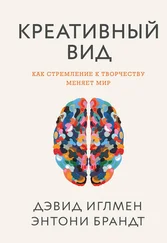


![Наталья Царенко - Джентльменами не рождаются, или Секреты воспитания мальчиков [litres]](/books/396504/natalya-carenko-dzhentlmenami-ne-rozhdayutsya-ili-se-thumb.webp)


